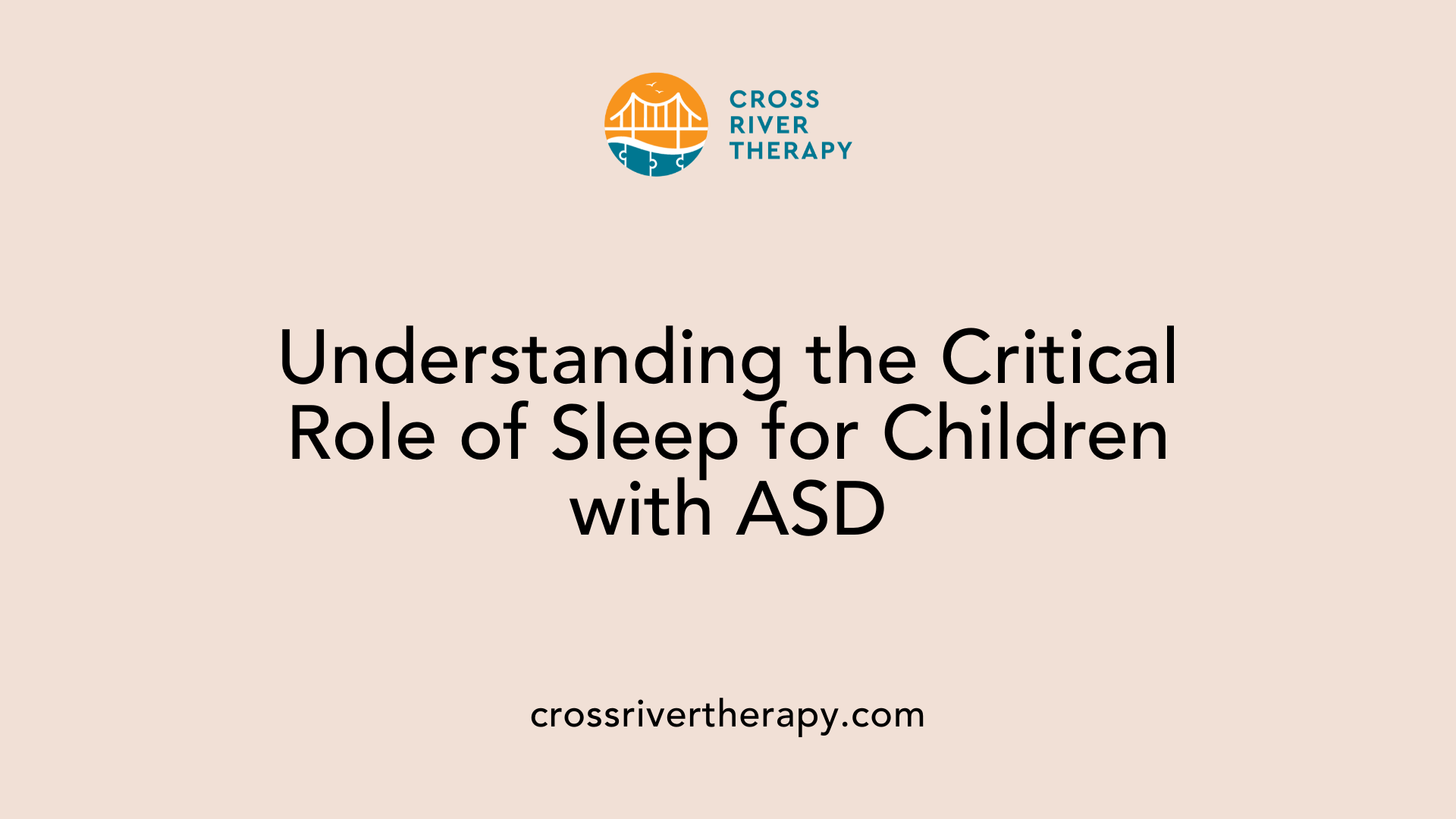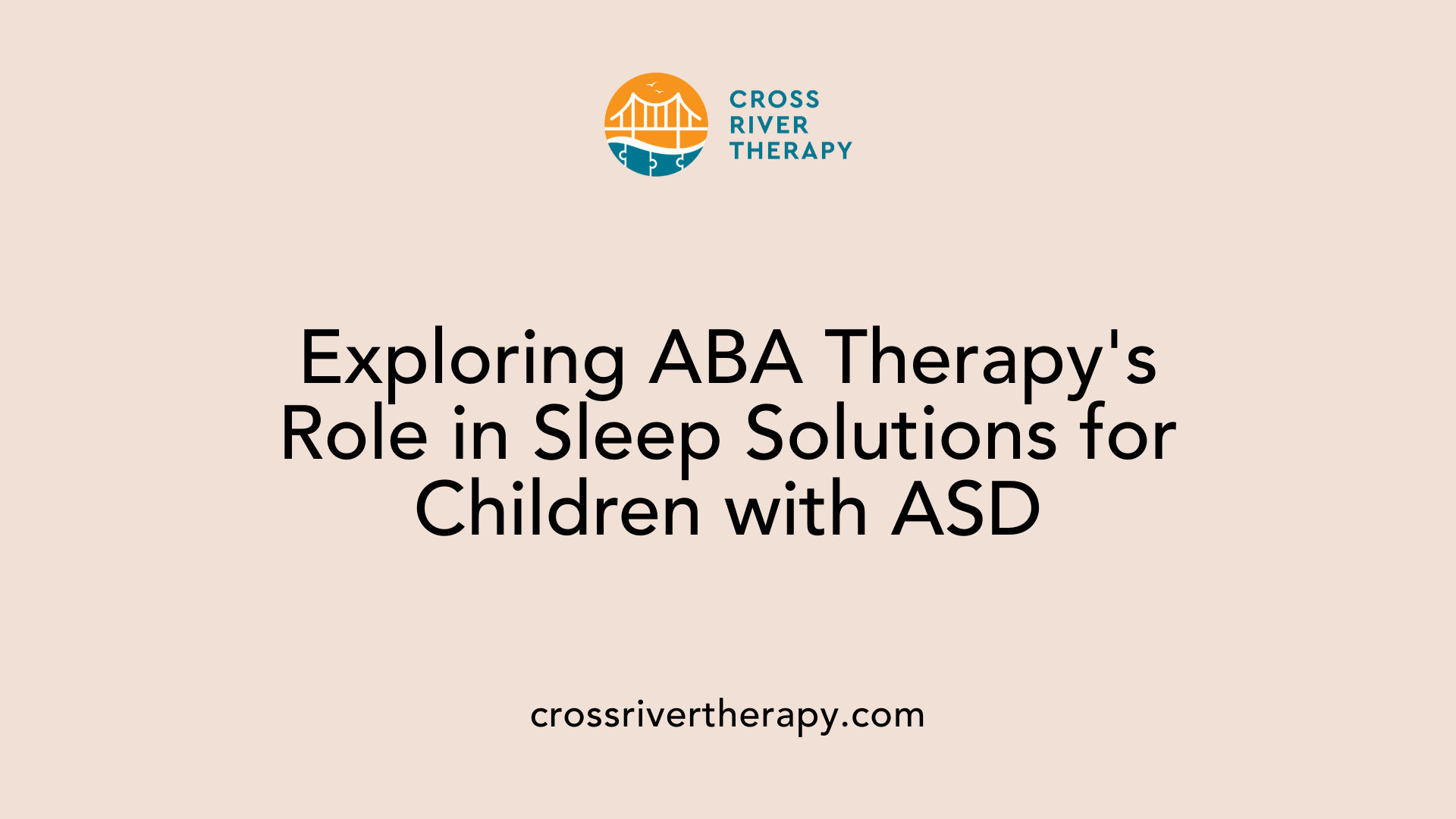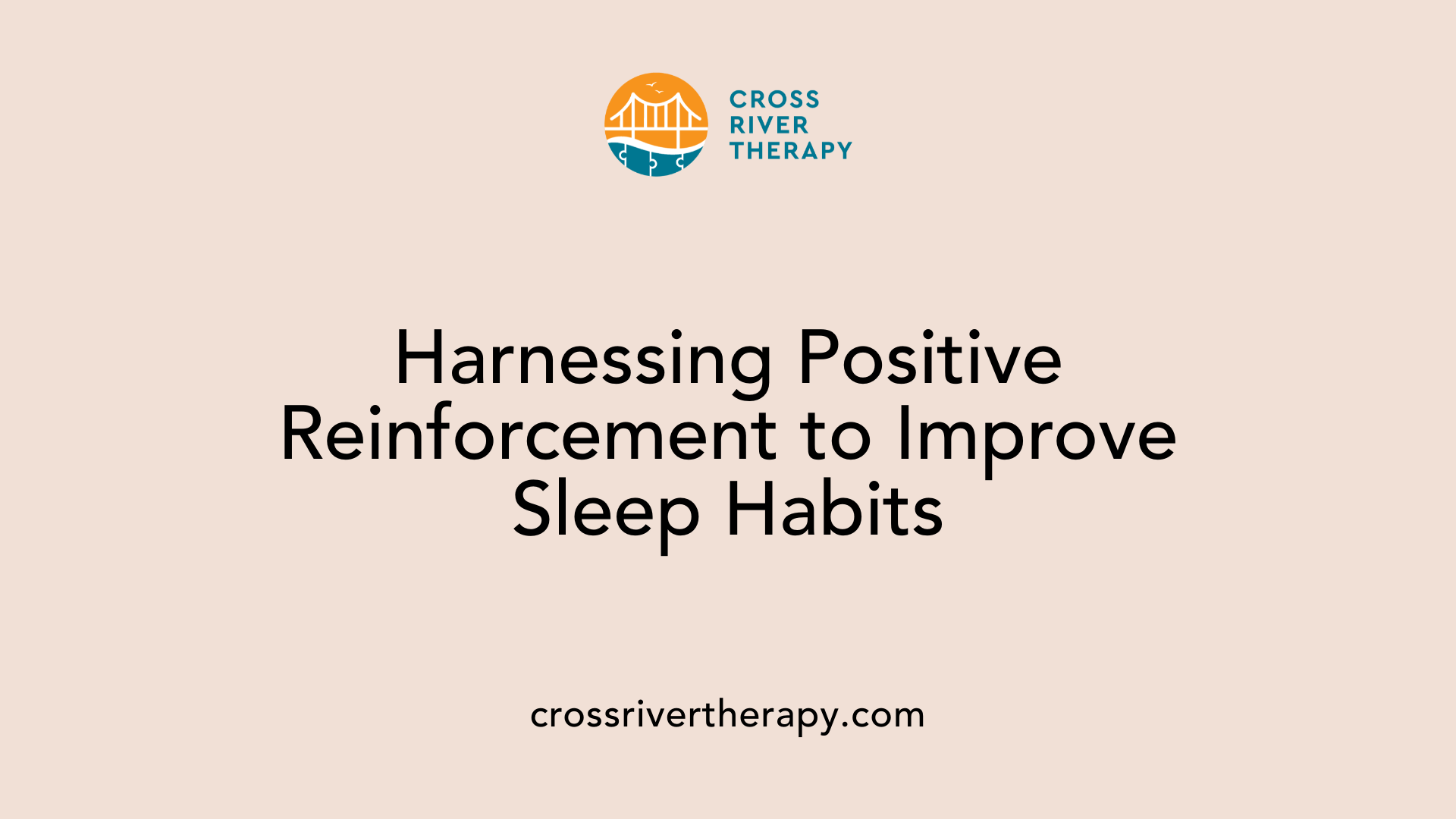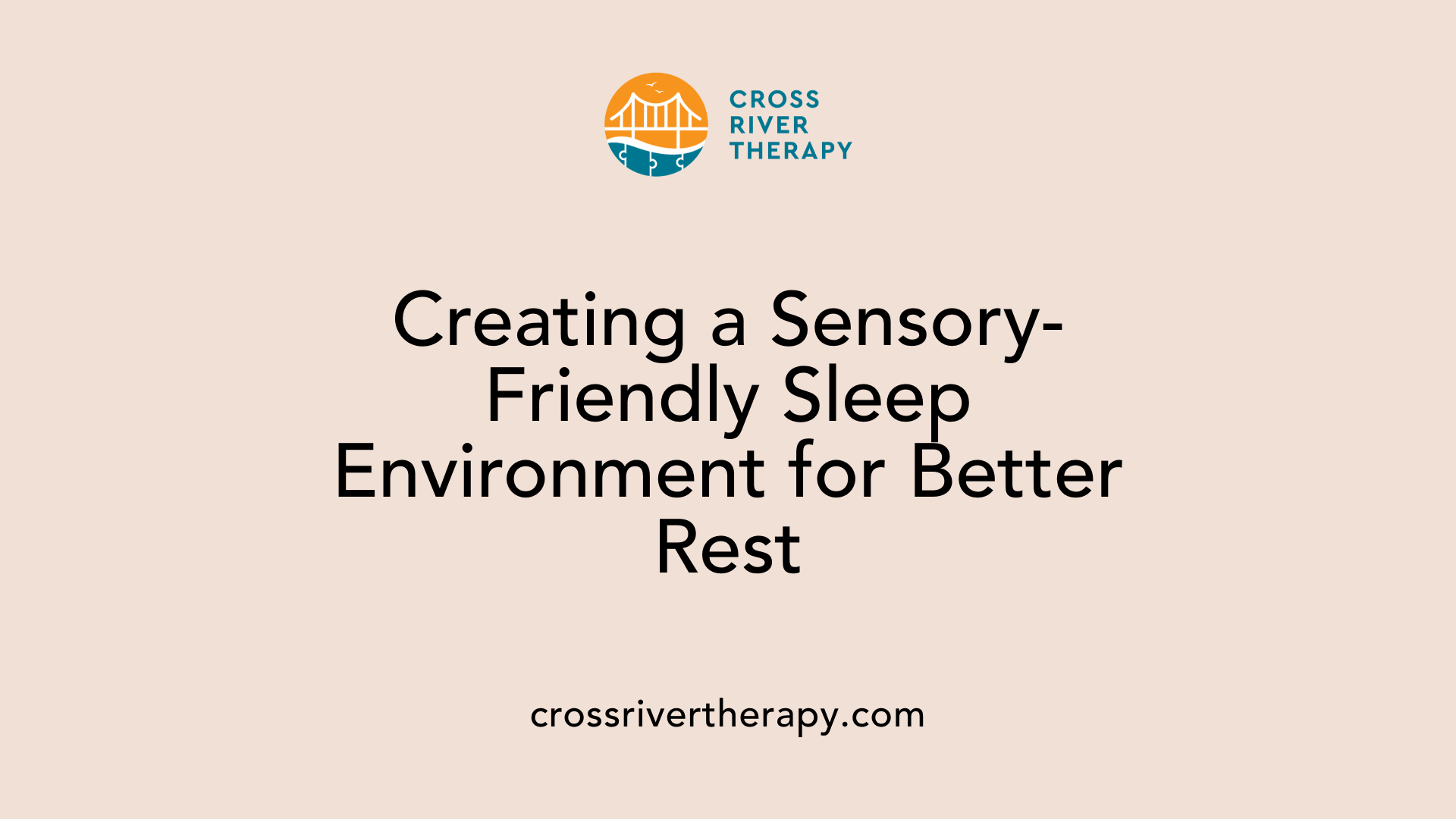How ABA Therapy Can Improve Your Child’s Sleep Routine
Harnessing ABA Therapy for Better Sleep in Children with Autism
Understanding the Sleep Challenges in Autism
Many children with Autism Spectrum Disorder (ASD) experience significant sleep difficulties, with rates dramatically higher than their neurotypical peers. This can impact not just the child's behavior and mood but also the well-being of the entire family. Understanding how Applied Behavior Analysis (ABA) therapy can help address these challenges provides a hopeful pathway to better sleep and improved quality of life.
The Importance of Sleep for Children with ASD

How prevalent are sleep issues among children with ASD compared to neurotypical children?
Studies show that between 40 to 80 percent of children with Autism Spectrum Disorder (ASD) face sleep issues, compared to 20 to 40 percent of typically developing children. This stark difference highlights the significant prevalence of sleep challenges within this population, leading to a pressing need for effective strategies to support better sleep habits.
What impacts do sleep disturbances have on children with autism?
Sleep disturbances in children with ASD can negatively affect their mood and behavior, heightening challenges such as anxiety and irritability. A lack of adequate sleep can also impair emotional regulation, impacting their social interactions and overall well-being. Many families experience increased stress levels due to these challenges, as sleepless nights can lead to difficulties managing daily routines.
To better understand these issues, let’s outline some common sleep problems affecting children with ASD:
| Common Sleep Issues | Description | Effects |
|---|---|---|
| Difficulty falling asleep | Struggling to settle down and wind down | Increased sleep onset latency |
| Frequent night awakenings | Regular disturbances during the night | Impairs overall sleep quality |
| Irregular sleep patterns | Inconsistent sleep-wake cycles | Affects mood and behavioral stability |
| Dependence on parental presence | Difficulty falling asleep alone | Increases anxiety around bedtime |
Addressing these issues not only enhances sleep quality for autistic children, but also improves their learning, adaptive behaviors, and emotional stability.
Applying ABA Therapy to Address Sleep Challenges

How does ABA therapy help in modifying sleep behaviors?
Applied Behavior Analysis (ABA) therapy is instrumental in addressing sleep challenges faced by children with Autism Spectrum Disorder (ASD). By focusing on behavior change, ABA approaches target specific sleep-related issues such as difficulty falling asleep, maintaining sleep, and frequent awakenings at night.
ABA therapy modifies sleep behaviors using tailored strategies that focus on the individual needs of each child. One key aspect is the Functional Behavior Assessment (FBA), which helps to identify underlying factors contributing to sleep disturbances, allowing for customized interventions. For instance, if sensory sensitivities are pinpointed, modifications to the child’s sleep environment may be recommended.
What supports are typically included in ABA sleep interventions?
ABA interventions often incorporate various techniques, such as:
- Establishing a Consistent Bedtime Routine: A structured routine signals to the child that it's time to unwind.
- Positive Reinforcement: Reward systems encourage children to adhere to bedtime practices, improving sleep compliance.
- Gradual Adjustments: Techniques such as bedtime fading help align the child's natural sleep patterns with a consistent schedule by making gradual changes to their sleep times.
By combining these strategies with a thorough assessment of a child's sleep behaviors, ABA provides an effective framework for improving sleep quality and addressing behavioral challenges associated with sleep disturbances.
Behavioral Interventions in ABA for Better Sleep
What are effective behavioral interventions used in ABA for sleep in children with ASD?
Effective behavioral interventions in Applied Behavior Analysis (ABA) for enhancing sleep in children with Autism Spectrum Disorder (ASD) include bedtime fading and positive routines.
1. Bedtime Fading
Bedtime fading involves adjusting the sleep schedule to align with a child’s natural sleep onset time. This technique has showed positive results by significantly increasing total sleep duration and reducing the time it takes for a child to fall asleep.
2. Positive Routines
Incorporating calming activities, such as reading or deep breathing, before sleep can collectively improve sleep cues for the child. Although positive routines have shown some effectiveness in decreasing sleep onset latency, their impact can vary among individuals.
Combining interventions for beneficial outcomes
Combining both bedtime fading and positive routines leads to improved sleep and behavioral outcomes. Results have shown that children often experience diminished challenging behaviors and increased learning opportunities.
This holistic approach not only addresses sleep issues but also enhances overall emotional well-being for children with ASD. With personalized and consistent routines, parents can foster a nurturing sleep environment that supports restful nights.
Establishing Consistent Bedtime Routines
Why is establishing a consistent bedtime routine critical for children with autism?
Establishing a consistent bedtime routine is essential for children with Autism Spectrum Disorder (ASD). It helps signal to them that it's time to unwind and prepare for sleep. This predictability not only promotes relaxation but also facilitates more independent sleep patterns, ultimately enhancing sleep quality.
Key elements of an effective bedtime routine may include:
- Calming Activities: Engaging in soothing activities such as reading, gentle stretching, or listening to calming music.
- Visual Schedules: Using visual schedules to outline the bedtime process can help children anticipate what comes next, reducing anxiety around transitions.
- Consistent Timing: Timed routines signal the body’s internal clock when its time to sleep, promoting better sleep hygiene.
Implementing these calming activities helps children with ASD learn to relax and prepare for sleep. Activities that last no longer than 30 minutes are ideal, as they signal the transition to rest. Gradual adjustments, such as minimizing screen time, can significantly contribute to better sleep habits and an overall improved atmosphere conducive to rest.
Utilizing Positive Reinforcement for Sleep Success

How does positive reinforcement play a role in ABA sleep interventions?
Positive reinforcement is a vital component in Applied Behavior Analysis (ABA) therapy aimed at improving sleep habits in children with Autism Spectrum Disorder (ASD). By rewarding desired behaviors, such as following bedtime routines or staying in bed, families can enhance their child's ability to sleep independently and peacefully.
This method involves using rewards and praise to incentivize children. For instance, a child might receive a small treat for successfully adhering to their bedtime routine throughout the week. Such rewards not only motivate but also instill a sense of achievement and autonomy in the child.
Additionally, specific praise for completing elements of the routine, like brushing teeth or reading a book, reinforces these behaviors. The consistency of this approach is crucial. As the child begins to internalize these habits, the reliance on rewards can gradually decrease.
Encouraging desired bedtime behaviors
To further encourage positive bedtime behaviors, families can implement techniques such as:
- Visual Schedules: These provide a clear depiction of bedtime steps, assisting children in understanding what to expect.
- Gradual Retreat: Parents can slowly reduce their physical presence at bedtime, fostering independence in children learning to fall asleep alone.
- Sleep Logs: Tracking sleep patterns helps identify which bedtime strategies are most effective, allowing for tailored interventions.
By combining these strategies with positive reinforcement, children can develop healthier sleep habits that not only enhance their well-being but also alleviate stress for their families.
Addressing Sensory Sensitivities at Sleep Time

Creating a conducive sleep environment
Creating a calming sleep environment is essential for children with Autism Spectrum Disorder (ASD) who experience sensory sensitivities. This includes using weighted blankets, which can provide a comforting pressure effect, helping to reduce anxiety and promote relaxation. Additionally, incorporating calming colors into the room and ensuring gentle, dim lighting can minimize sensory overload and foster a peaceful atmosphere.
Impact of sensory needs on sleep
Children with ASD often struggle with various sensory sensitivities that can interfere with their ability to fall asleep and stay asleep. For instance, loud noises or bright lights can be particularly disruptive, leading to frequent awakenings or difficulty initially settling down.
Effective strategies to address these sensitivities include:
| Strategy | Purpose | Additional Notes |
|---|---|---|
| Weighted Blankets | Provides calming pressure | Increases security and comfort |
| White Noise Machines | Masks distracting sounds | Creates a consistent auditory environment |
| Cozy Bedding | Enhances comfort | Soft materials can prevent discomfort |
| Visual Schedules | Provides predictability | Helps children understand bedtime routines |
By carefully adjusting the sleep environment and utilizing these sensory-focused strategies, caregivers can significantly enhance sleep quality for children with ASD.
Examining Sleep Hygiene and Behavioral Strategies

What are some key components of promoting good sleep hygiene for children with autism?
Promoting good sleep hygiene is vital for children with Autism Spectrum Disorder (ASD). Effective strategies can foster better sleep preparation and help alleviate sleep difficulties.
Consistent Bedtime Routines
- Establishing routines signals to the child it's time to wind down. Activities such as brushing teeth, changing into pajamas, and reading are calming and create predictability.
Relaxation Techniques
- Activities such as deep breathing exercises, progressive muscle relaxation, or listening to soothing music prior to bed can significantly calm the mind and body. These promote relaxation and set the stage for sleep.
Limiting Evening Stimuli
- Reducing exposure to screens and bright lights at least an hour before bedtime is essential. The blue light from devices can interfere with the sleep-wake cycle, which is particularly disruptive for autistic children.
Behavioral strategies for supporting sleep
Behavioral strategies play a crucial role in establishing effective sleep patterns for children with ASD.
- Positive Reinforcement: Using rewards, like praise or a favorite breakfast treat for staying in bed, encourages children to adopt healthier sleep habits.
- Escape Extinction Procedures: This involves guiding children back to bed with minimal interaction when they leave, reinforcing the behavior of staying in bed during the night.
- Gradual Changes: Slowly adjusting bedtime or reducing parental presence at bedtime can help children learn to sleep independently, easing their transition into a restful night.
Gradual Changes and Their Role in ABA
Importance of gradual transitions in sleep routine changes
Gradual changes play a crucial role in adjusting sleep routines for children with Autism Spectrum Disorder (ASD). Sudden shifts can lead to increased anxiety and resistance to new sleep patterns. Instead, small, incremental adjustments help children acclimate more comfortably to changes. For instance, parents might start by moving bedtime by just 10 to 15 minutes earlier every few days, allowing the child to adapt to the new schedule without overwhelming them.
Effects of incremental adjustments on sleep
Incremental adjustments to sleep routines have positive effects on sleep quality and behavior. These small changes reduce stress for both the child and their parents. With less resistance to bedtime, children are often more willing to follow through on their routines. Additionally, gradual modifications can help children learn to self-soothe, making it easier for them to fall asleep independently.
In summary, by implementing gradual changes, caregivers can foster a smoother transition to healthier sleep habits. This approach not only supports better sleep quality but also contributes to the overall emotional and behavioral well-being of children with ASD.
The Role of Collaboration in Designing Sleep Interventions
Why is collaboration important in designing sleep interventions for children with ASD?
Collaboration with a variety of professionals is crucial for developing effective sleep interventions for children with Autism Spectrum Disorder (ASD). Each child presents unique sleep challenges influenced by both behavioral and medical factors. As such, a multidisciplinary approach is essential.
Involving behavior analysts, sleep specialists, and medical professionals allows for a comprehensive assessment. This approach leads to customized interventions that are tailored to the child’s specific sleep patterns and behavioral needs. For instance, behavior analysts can identify behaviors that affect sleep, while sleep specialists can diagnose any underlying sleep disorders. Medical practitioners can address health issues that may interfere with sleep, helping to create a holistic plan.
Additionally, professionals can share insights and methodologies that enhance the development of individualized sleep strategies. For example, sleep specialists might recommend environmental modifications, while therapists may advocate for behavioral strategies to establish consistent bedtime routines. This collaboration not only enhances the effectiveness of the interventions but ultimately contributes to better sleep quality and overall well-being for children with ASD.
Overarching Benefits of Improved Sleep on Child Development
Impact of sleep on learning and behavior
Sleep plays a critical role in the development of children, particularly those with Autism Spectrum Disorder (ASD). Quality sleep enhances cognitive functions such as attention and memory retention. Children who are well-rested are generally able to engage more dynamically in learning activities, making it easier for them to grasp new concepts.
Behaviorally, adequate sleep can lead to improved emotional regulation, reducing irritability and anxiety. This helps children with ASD manage interactions with peers and enhances their ability to learn through social experiences. When sleep is disrupted, however, children's challenging behaviors can increase, negatively affecting both their mood and learning opportunities.
What are the long-term benefits of improved sleep for children with ASD?
Addressing sleep issues can yield significant long-term benefits. For instance, consistent sleep patterns improve not only behavioral stability but also communication skills. Children who receive sufficient sleep demonstrate better focus, facilitating greater participation in educational settings. Furthermore, effective sleep interventions foster enhanced memory capabilities, leading to improved performance in various therapeutic and educational contexts.
By systematically addressing sleep disorders, caregivers can notice lasting advancements in their children's overall developmental trajectory, supporting a more successful transition into adulthood.
Identifying and Tackling Sleep Problems
What Are Common Sleep Issues Faced by Children with ASD, and How Can They Be Assessed?
Children with Autism Spectrum Disorder (ASD) frequently encounter various sleep challenges, affecting their overall well-being. Notable issues include:
- Difficulty falling asleep: Many children may struggle to settle down at night, often requiring parental presence to do so.
- Frequent awakenings: It's common for children to wake up multiple times during the night, disrupting their sleep cycles.
- Irregular sleep patterns: Unlike neurotypical children, those with ASD are more prone to inconsistencies in their sleep schedules.
To effectively address these sleep problems, thorough assessments are essential. A sleep log can be particularly useful, enabling parents and professionals to track behaviors, patterns, and environmental influences on sleep. This documented approach helps identify specific challenges, guiding targeted behavioral strategies tailored to the child's needs.
By utilizing behavior analytic methods, therapists can implement individualized sleep plans that aim to foster healthy sleep routines and promote better sleep quality in children with ASD.
Combating Bedtime Resistance with ABA Techniques
What strategies can be used to manage bedtime resistance in children with ASD?
Managing bedtime resistance in children with Autism Spectrum Disorder (ASD) can be challenging. However, employing effective strategies rooted in Applied Behavior Analysis (ABA) can facilitate smoother transitions to sleep.
One effective approach is the use of bedtime passes. This technique allows a child a specific reason to leave their room briefly, thus providing a structured way to manage bedtime resistance. The pass can be given for a predetermined activity, such as a drink of water or a quick bathroom trip, which reinforces the importance of returning to bed afterward.
Graduated extinction strategies are another valuable method. This involves a gradual approach where parents systematically increase the time they wait before returning to the child's room after they express discomfort or leave the bed. This process encourages the child to learn self-soothing techniques, which promotes independence.
Encouraging independence at bedtime is crucial. Techniques like decreasing parental interaction at bedtime can gradually help children learn to settle themselves to sleep. Positive reinforcement, such as praise or rewards for staying in bed, can also aid in reinforcing desired behaviors.
Embracing a Personalized Approach to Sleep Through ABA
Through a thoughtful application of ABA therapy tailored to the needs of children with Autism Spectrum Disorder, significant improvements in sleep routines can be achieved. The focus on consistency, sensory sensitivities, and collaboration among professionals creates a robust framework for promoting healthier sleep patterns. As families gain a deeper understanding of these techniques, the pathway to restful nights and improved daytime function becomes clearer, enhancing the overall quality of life for children and their families.
References
- Parent-Implemented Bedtime Fading and Positive Routines for ...
- Using ABA Techniques to Improve Sleep in Children with Autism
- The Impact of Sleep on Behavior: ABA Insights
- Training Kids with Autism to Sleep Alone: Expert Guide - All Star ABA
- Why ABA Therapy is Effective for Addressing Sleep Challenges in ...
- Autism and bedtime routine - LeafWing Center
- How To Get a Child With Autism to Sleep Alone - Songbird Therapy



